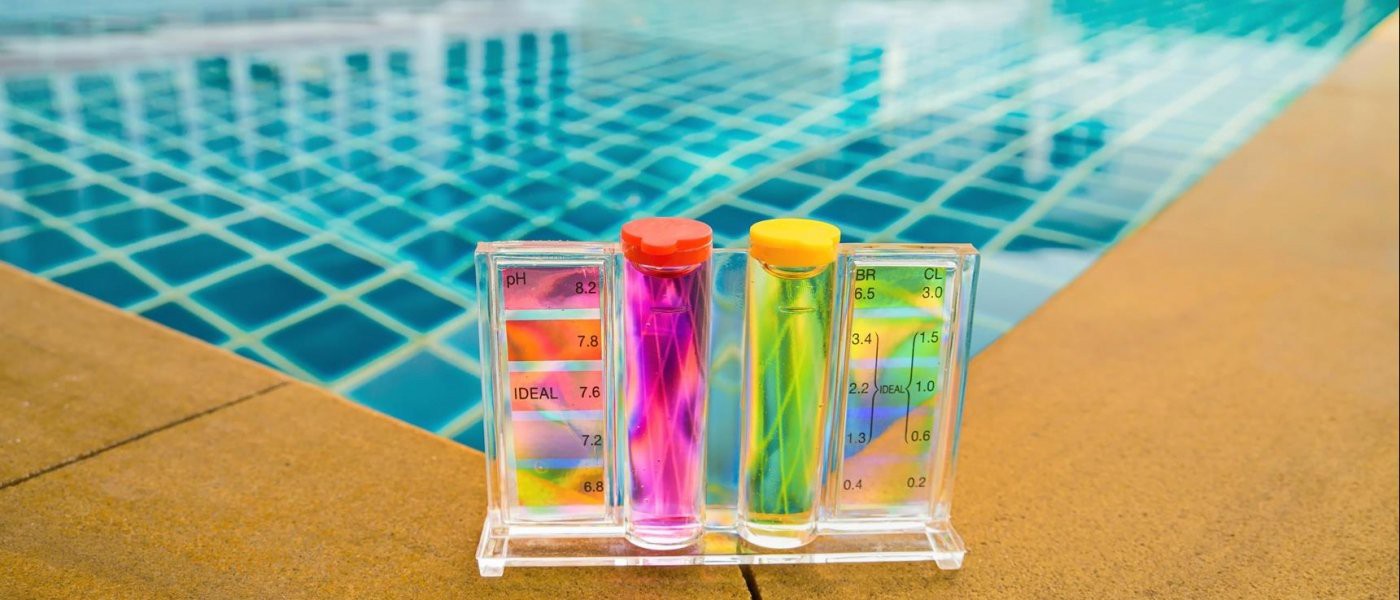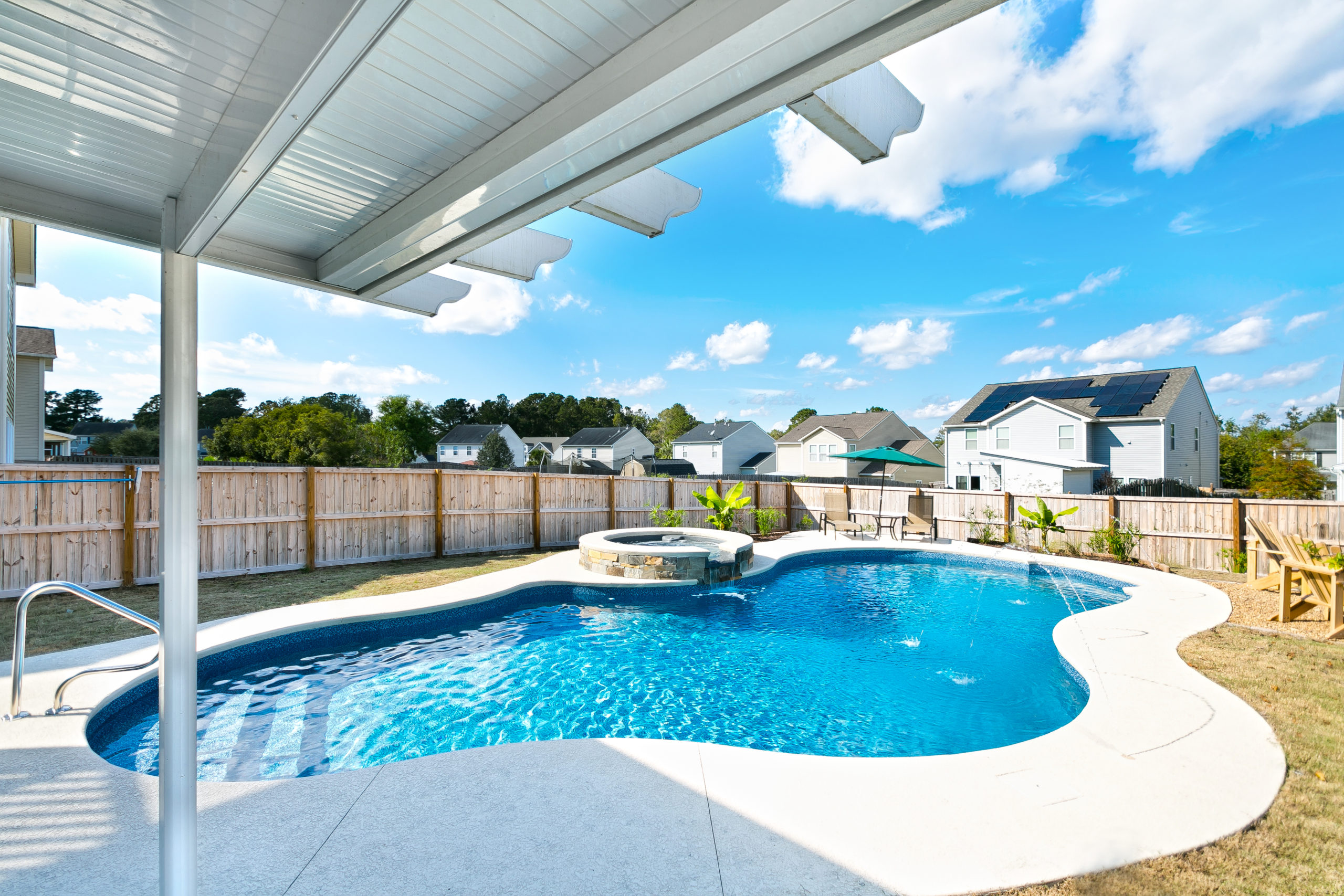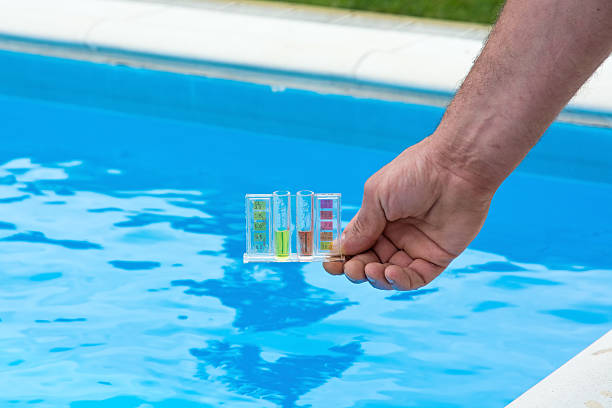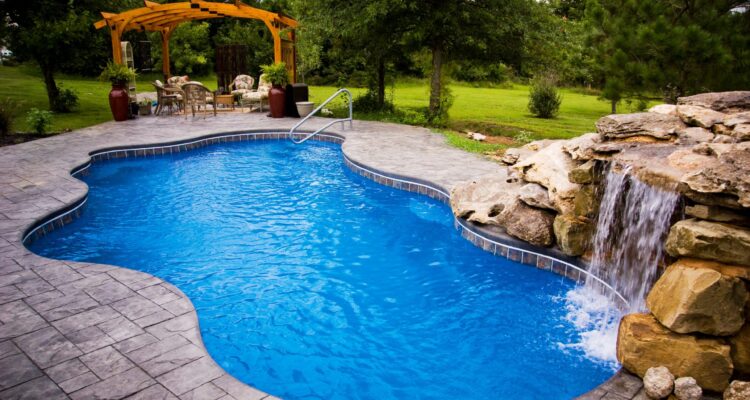When you have a swimming pool, you want the water to look clean and crisp. Additionally, you want to jump in knowing that the water is clean and properly balanced with the various chemicals that are used. You’ll want to work to achieve the proper pH.
Unfortunately, water is not always as balanced as you want it to be. It’s often about mixing a few different chemicals to achieve the best possible results. Too much of one chemical and not enough of another can result in the pH dropping or skyrocketing. And, if you don’t have a pH-balanced pool, you can’t really go into it. This means that you’ll want to do everything you can to keep your pool chemically balanced so that you can use it whenever you want.

The normal pH of a pool should be somewhere around 7.0 as that is what is considered “neutral.” Realistically, you can see the levels go up or down a little bit. The recommended range for a swimming pool is 7.2-7.6. If you dip down below those numbers, it will become too acidic. Anything above those numbers and it will become too alkaline.
Measuring your swimming pool’s pH is important and should be done regularly. Perhaps more importantly, you’ll need to know what can be done to raise or lower the pH. This isn’t one of those things that are simply “recommended.” Testing for pH is a must when you’re a pool owner so that you take care of your investment and keep the water safe for you and everyone who wants to swim in it.

Why pH Level is So Important?
As you look at what is the normal pH of a swimming pool, you should know that the full scale goes from 0 to 14. It runs from highly acidic to highly alkaline, with 7 falling in the middle as neutral.
The best pH level for a swimming pool is actually 7.4 because it is the same pH as mucus membranes and eyes in humans. This way, you can swim in the water in total comfort without feeling as though your sinuses or eyes are burning or feeling as though there’s a coating of something in the water.
7.4 also achieves a high level of chlorine disinfection so you don’t have to worry about algae or anything else growing in your pool.
If the pH is too high, it’s going to irritate your skin, cause cloudiness in the water, and lead to lime precipitation. You might start to see scale buildup around the pool and even within the filters and pumps. If your pH is too high for extended periods of time, it can destroy the various mechanical components of the pool.

If the pH is too low, the acidity of the pool can also destroy mechanical components. It will irritate your eyes and mucus membranes as you stay in the water (and under the water) for too long. Plus, the acid will eventually cause destruction to the pool liner – and this can be a very expensive repair.
It’s important to manage the pH level regularly in your pool so that you can make sure you know what chemicals need to be added. Just because the pool’s pH was at 7.4 last week doesn’t mean that it’s maintained that level throughout the past seven days.
Chlorine is continuously consumed in the pool, though how much is consumed depends on a number of factors:
- Usage
- Size of the pool
- Water temperature
- Exposure to sunlight
- Cleanliness of those inside of the pool
Obviously, you can only control some of those factors. For example, making sure everyone rinses off before going into the pool can actually help to preserve the pH.

How to Test and Maintain Your pH Level
As a responsible pool owner, you’ll want to know how to test and maintain your pool’s pH levels.
Testing should be done at least weekly. Realistically, when the pool is being used daily, you should be testing daily. Test strips can be placed into the water to give you an accurate reading of the pH.
When you test the pH, be sure that you go to an area of the pool that is far away from the skimmer as well as any returns. Place the strip in the water and follow the instructions on the container. When you remove the strip from the water, don’t shake the excess water off. Wait and compare the strip’s color to the range on the container.
If the pH isn’t within a normal range, you’ll want to add chemicals that will help to create the desired balance. If you need to lower the pH, you’ll typically want to add muriatic acid. If you need to raise the pH, you’ll add sodium carbonate.

The amount that you put into the pool will depend on just how high or low the pH is as well as the total volume of your pool. If you don’t follow the necessary calculations, you may have a continuous problem of being too high or too low, which can be frustrating and prevent you from being able to use your pool.
It’s also worth noting that other chemicals may need to go into your pool, too, so that you can enjoy the right balance of everything. Certain chemicals may affect your pH, which is all the more reason why you should seek help for maintaining your pool.

Hiring a professional can be one of the easiest ways to make sure that your pH level is properly maintained. Ajax Pool and Spa, for example, offers weekly maintenance services. A trained technician will come out to test your water and add in the various chemicals to achieve the proper pH. It can take the stress out of managing your pool’s chemistry on your own. Plus, you’ll have a professional to turn to when you have questions about pool maintenance or need a repair.
After owning your pool for a while, testing for your pH will be second nature. And, as for maintaining the pH levels, you can take the DIY route or pass it off to a professional. Either way, it’s something that has to be done for the health and safety of your pool.

